The three popular MP Kitchen businesses
Menkui Wanderer(麺喰ワンダラー)
column 2025.07.23 Gofukuken / Mita Noodle Factory / Happotei
The popular chain “Tenkaippin(天下一品)” has been closing one after another, which has become a hot topic.
To summarize, the “Tenkaippin” that closed this year was operated by the franchisee MP Kitchen Co., Ltd., and all 10 shops, including the Shibuya shop, Tamachi shop, Meguro shop, Shinjuku West Exit shop, Kichijoji shop, Ikebukuro West Exit shop, Kamata shop, Kawasaki shop, Ofuna shop, and Omiya East Exit shop, have closed. All of them will be newly opened as “Gofukuken(伍福軒)” on July 15th and 16th.
The same company also operated the Kabukicho shop, Ikebukuro East Exit shop, Ebisu shop, Gotanda shop, Yawatayama shop, and Tama New Town shop, which also closed last year. This shop was renovated and opened under a different brand name, such as “Mita Seimenjo(三田製麺所)” and “Happotei(八宝亭)”. I ate at three of the popular MP Kitchen shops.
01 “Gofukuken” (Meguro Sta.)
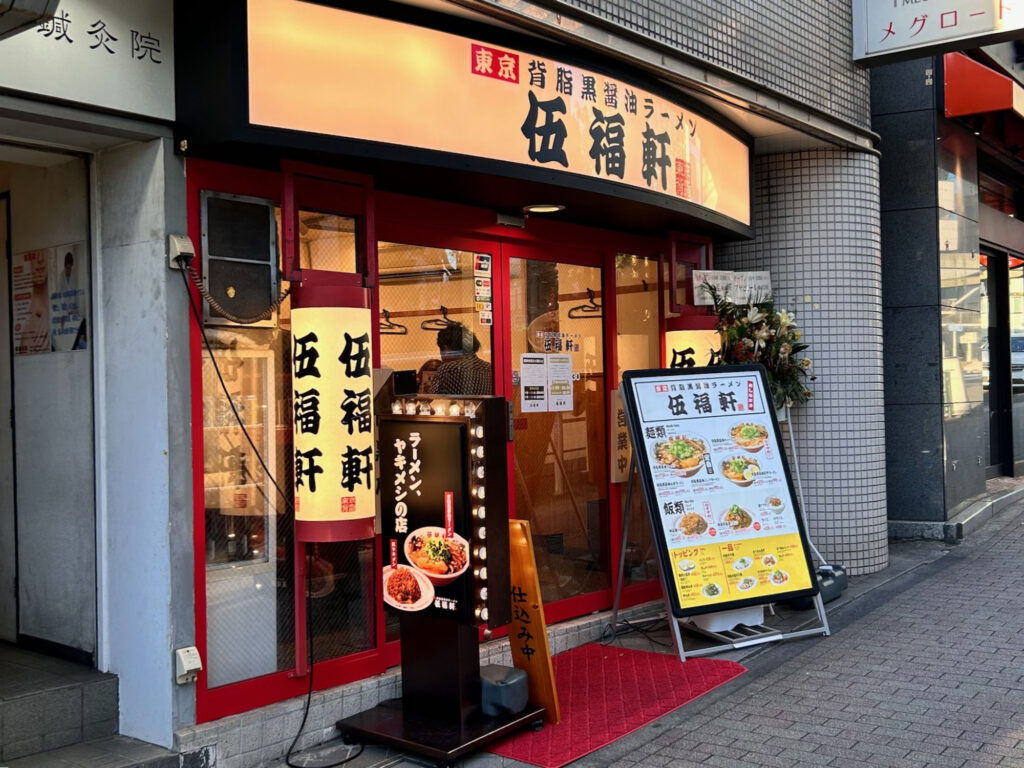
In June of this year, 10 “Tenkaippin” shops were closed, and on July 15th and 16th, 10 new shops were opened simultaneously (in two days, to be precise).
During the pre-opening period (5 days), they had a one-coin sale (500 yen), so there was a line the whole time.
It was finally over, so I went. Maybe because it was a holiday, it was almost full even at 2pm. I was able to get a seat at the right time, but after that, many people were turned away because it was full, and some people left while others waited. It’s a big hit.
From the advance information and the visuals, I thought it was inspired by “Shinpuku Saikan(新福菜館)”. “Tenkaippin” also originated in Kyoto, so it’s interesting that the next ramen is also a local ramen that originated in Kyoto.
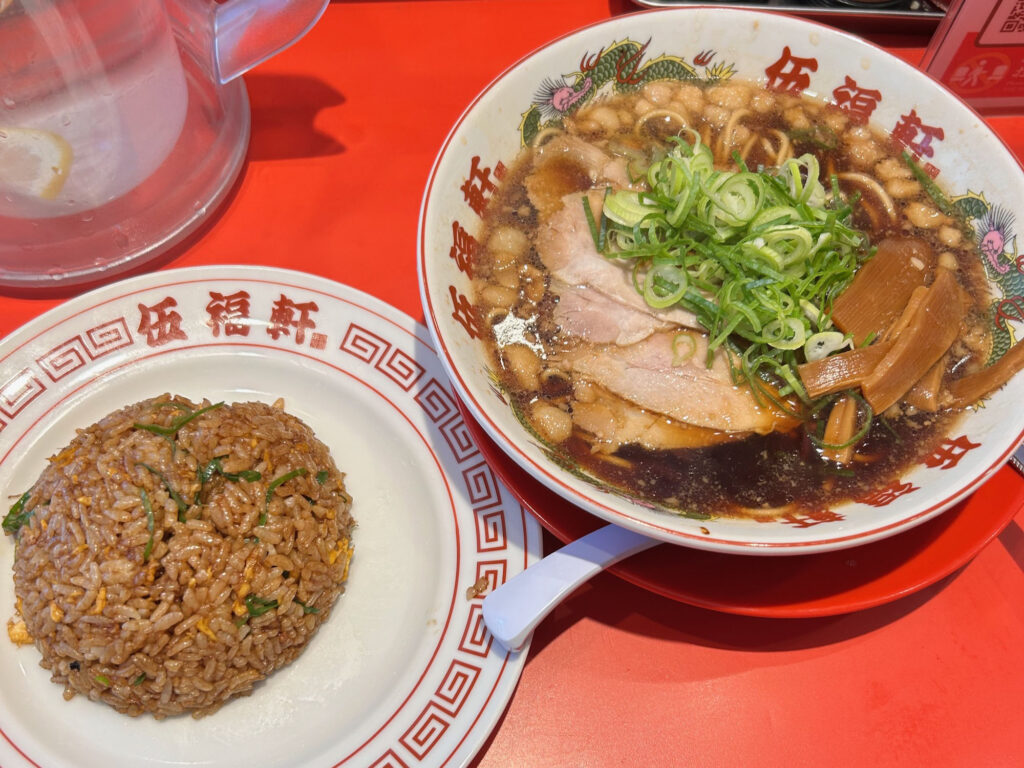
That’s what I thought, but when I tried it, it was surprisingly different. The black fried rice was the same, but the ramen was a little different. There was a big piece of back fat floating on top, so it looked like Onomichi ramen(尾道ラーメン Hiroshima Pref.), and that was the big difference in appearance. The soup was also pork-based, so it felt a little like Daiichi Asahi(第一旭). (It was quite different as I continued to eat it) Harima uses dark soy sauce from Tatsuno (Hyogo Pref.), so it has a Kansai-style feel. The medium-thin noodles were delicious, so I wondered if they were homemade, and when I looked it up, I found out that it was Kanno Seimenjo(菅野製麺所). It’s a noodle factory that has been making a lot of progress recently. The fried rice tasted as expected. I can say that 1,050 yen for a set is quite a good deal these days. The ramen also comes with a lot of chashu, so it’s great that it’s this price.
02 “Mita Seimenjo” (Gotanda Sta.)
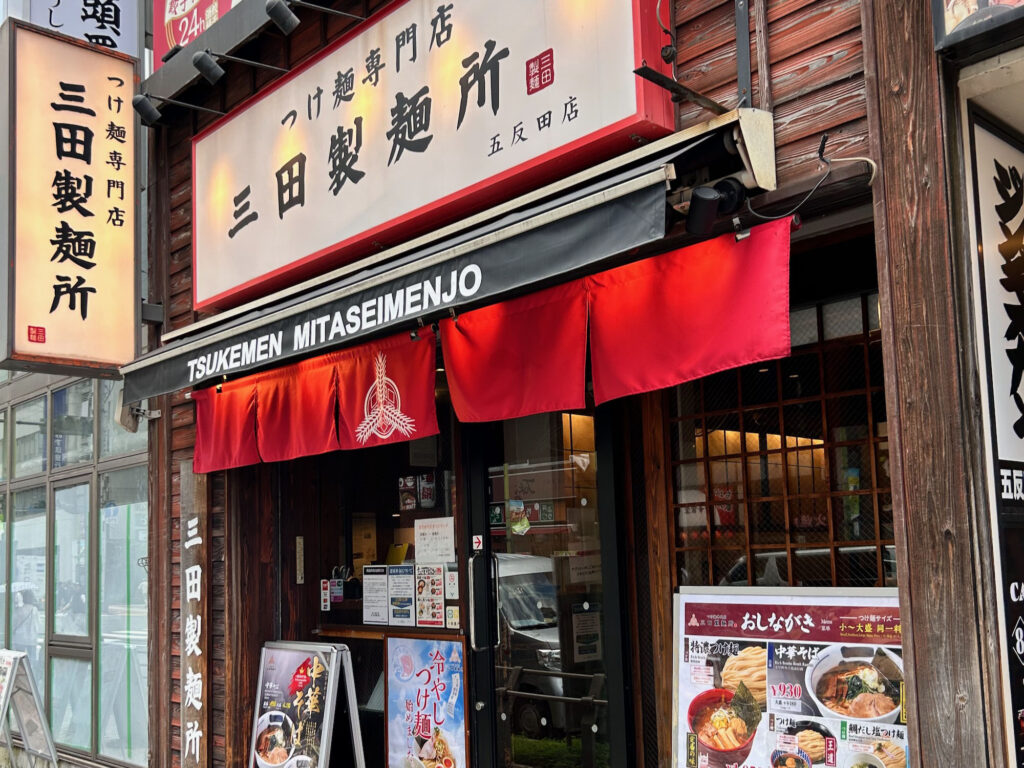
Mita Seimenjo(三田製麺所), a tsukemen specialty shop that now has over 50 shops in Japan and overseas, will be releasing a new “Chuka Soba(= ramen)” from July 9th. I think it must have been very difficult to open 10 Gofukuken shops, but it must have been very difficult to introduce this new menu to all 50 or more shops (excluding some shops). I don’t know if the product development team is the same, but I imagine they were sleepless working towards July.

The photo in the news release looked really delicious, so I was thinking of eating it, but it turned out to be the same timing as Gofukuken.
The Chinese noodles(Chuka Soba = ramen) are a Chinese dish with a strong flavor of four types of dried fish: bonito flakes, Souda bonito flakes, mackerel flakes, and round herring flakes. The noodles, which go well with the strong soup, are also quite good. I also wanted to try tsukemen for the first time in a while.
03 “Happotei” (Gotanda Sta.)
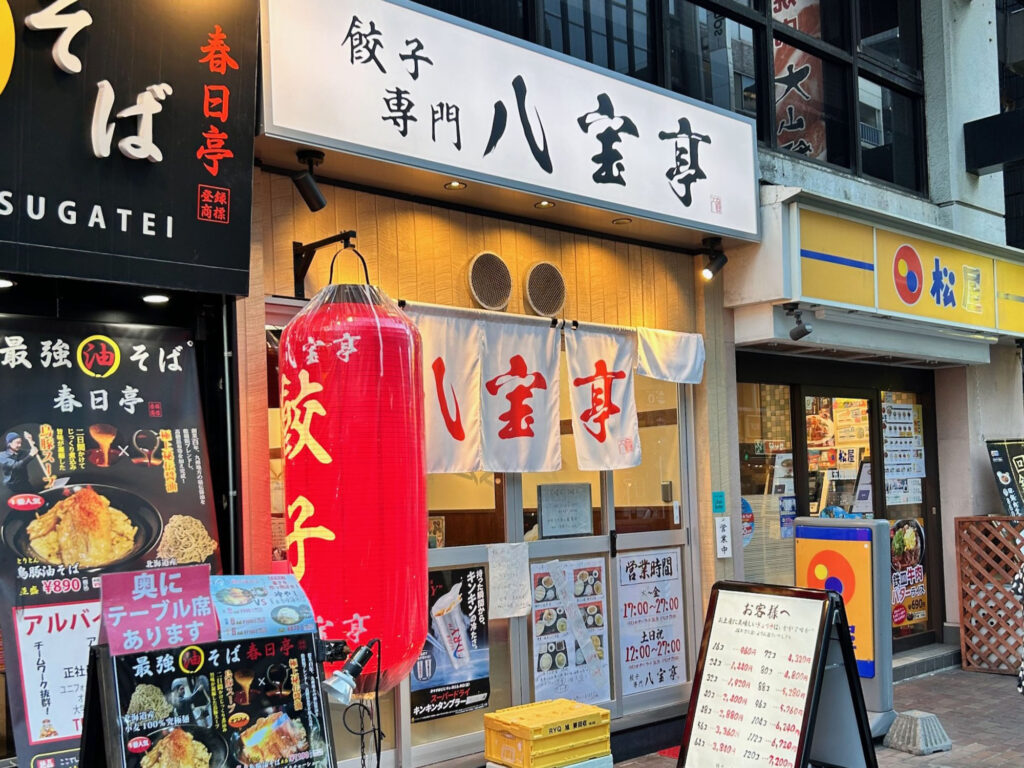
A new business model from the much talked about MP Kitchen. It will open in September 2024 on the site of the former Tenkaippin Gotanda shop. After that, the second shop will open in Ebisu. This shop seems to be dedicated to being a “gyoza specialty shop” and does not have many menu items. The gyoza dumpling has a light taste. The staff recommends eating it with yuzu pepper. It seems like a good place to go for a quick drink with gyoza as the main focus.
Shop Information
01.Gofukuken Meguro Branch(東京背脂黒醤油ラーメン 伍福軒 目黒店)
Official Information
1-1 Meg Road Building, 2-26-5 Kami-Osaki, Shinagawa-ku, Tokyo 141-0021
02.Tsukemen Specialty Shop Mita Seimenjo Gotanda Branch(つけ麺専門店 三田製麺所 五反田店)
Official Information
1F GRIO Nishigotanda Building, 1-17-6 Nishigotanda, Shinagawa-ku, Tokyo 141-0031
03.Gyoza Specialty Happotei Main Branch(餃子専門 八宝亭 本店)
Official Information
1F Tsukasa Building, 1-11-9 Nishigotanda, Shinagawa-ku, Tokyo 141-0031
Autor of this article
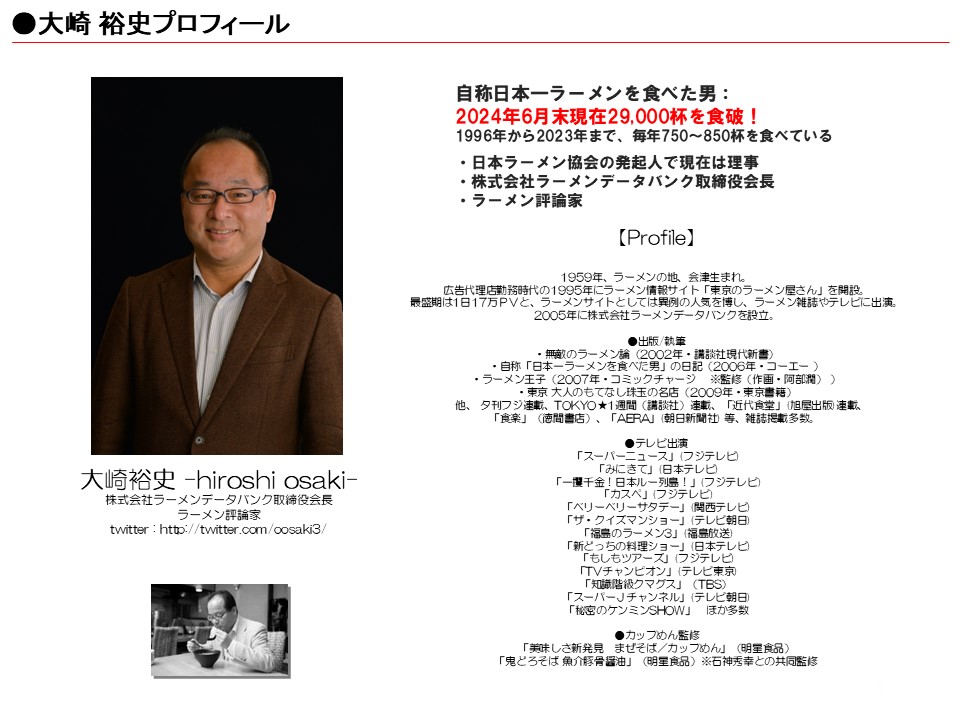
■Hiroshi Osaki (大崎 裕史); Chairman of the Board of Directors of Ramen Databank Co., Ltd. One of the founders of the Japan Ramen Association. Executive Committee Chairman of the Tokyo Ramen Festa. Born in 1959 in Aizu, the land of ramen. While working at an advertising agency, he launched the ramen information site “Tokyo Ramen Shops” in 1995. Founded Ramen Databank Co., Ltd. in 2005. Became chairman of the board of directors in 2011. He has appeared in many magazines and on television as “the man who calls himself the man who has eaten the most ramen in Japan” (as of the end of June 2024, he has eaten about 14,000 ramen shops and about 29,000 bowls). His books include “Muteki no Ramenron” (The Invincible Ramen Theory) (Kodansha Shinsho) and “Nihon Ramen Hishi(Japan Ramen Hidden Story)” (Nihon Keizai Shimbun Publishing).
